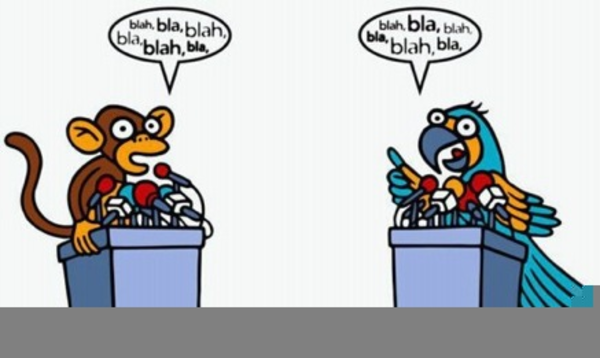Background:
Questions and answers that show up on discussion boards, particularly about performance changes, can be a source of amusement that occasionally are painful to read.

A recent example of this Q & “suspect” A hit on a number of common discussion “credibility issues” that are noteworthy for the number of issues and their source. Coming from someone employed in the aftermarket parts business, the example illustrates the problems that consumers face when trying to get facts about automotive aftermarket parts performance.

Sprinkle in some disparaging commentary about my work testing parts, and this “perfect storm” becomes an opportunity to analyze an argument.

The question:
The discussion started with a typical question:
The “information” source in this analysis, Mr. Veal, continued to defend his opinion and during the ensuing discussion some data I have generated was referenced, then I was tagged, bringing the discussion to my attention.
So what’s the problem here?
Several things, jumping ahead briefly, a matter of unanswered questions. Upon joining the discussion I posed a series of questions to Mr. Veal, looking to get more details about the comments he made. At this time, now 5 days since tagging his name to bring attention to my questions, he has failed to respond. This despite Mr. Veal making more comments elsewhere within hours of my questions being asked.
This is a common problem whereupon asking a person to elaborate on claims they have made they vanish from the discussion, failing to support the statements they have made.

Returning to the comments that were made, there is a matter of a lack of evidence in support them. Reminder, the question was about how well a modified stock airbox flows air and Mr. Veal has worked for a business that sells intakes.
Starting from the top in figure 1:
Mr. Veal states that “While it may flow decently in a bench test. Real world application is not the same.”

Mr. Veal does not present any evidence in support of the statement. Nor is any explanation given for how creating a vacuum at the outlet of the airbox by using a flow bench changes the airflow outcome versus the vaguely termed “real world“.
Mr. Veal states that “I’ve seen a good amount of turbo failures from the stock box.”
Mr. Veal does not present any evidence in support of the statement. Mr. Veal implies that an analysis of the failure mode has been performed on a number of turbochargers and trend analysis of turbocharger failures has pointed to the root cause of failure being the stock Volkswagen airbox. This “implied” evaluation could not be verified due to Mr. Veal’s disappearance from the discussion.
Mr. Veal continues with “Typically on stock turbos, but when you look at the logs on a car with a proper intake vs a modded box you’ll see the shaft speed readings change.”
A question about how much of a change occurs between a “proper intake” and the modified Volkswagen intake went unanswered, again due to Mr. Veal’s departure from the discussion. Nor was a question of how he, or the person he was addressing, would measure the turbocharger shaft speed. Note: The ECU calculated value is likely inaccurate when the vehicle is equipped with aftermarket intake components.
Mr. Veal concludes the initial reply with “While you might make the same boost pressure, it takes more speed to do so which in turn works the turbo harder leading to premature failure“

If the modified stock airbox causes more of a pressure drop versus the “proper intake” prior to the turbo compressor then this might be true. The problem with this statement is the same problem that crops up in much performance parts advertising, it’s vague. The turbocharger spinning 1 RPM more works the turbo harder, although by an infinitesimally small amount.
Presenting, or citing, evidence makes for a more compelling argument. Mr. Veal does neither, resulting unsupported claims. Given his prior employment with Integrated Engineering and the numerous benefits cited for an aftermarket intake, it’s unfortunate Mr. Veal did not present any evidence to support his claims.
How about that testing?
Moving onto figure 2:
In this reply the topic changes almost immediately, but the first sentence is another unsupported claim about the airbox performance.
Mr. Veal says “Take it from Tom and I, it is a restriction.”

I suppose if one wanted to forgo critical thinking and decision making based on evidence the “take my word for it” approach might be a viable option. I don’t recommend it though.
Mr. Veal then turns to addressing my work, “I commend Jeff’s testing but it’s not the holy doctrine people think it is.“
There is a good caution in the statement, blindly taking the results published in this blog as truth is unwise. Skepticism of any information, until it has been vetted, is a wiser approach. To that end I offered to compare some of my work with a vendor of Mr. Veal’s choice, but Mr. Veal’s disappearance prevented this from occurring.
Next from Mr. Veal is “I mean, measuring an intercooler on flow alone for example isn’t really valid testing.”

Mr. Veal states that testing I have performed on intercoolers consists of measuring airflow only. This raises two possibilities 1) Mr. Veal is lying about how I test, 2) Mr. Veal is exceptionally ignorant of how I test. In December of 2018 the first flow test of an intercooler was performed, the following week an IC test measuring IAT was conducted. Since June of 2019 temperature and pressure probes have been installed in the GTI intake to gather on-vehicle pressure and temperature data and that has continued through to now, December 2020. For the past two years more than “flow alone” has been recorded, begging the question of whether Mr. Veal ever bothered to inform himself about the testing activity that he is criticizing.
Mr. Veal next states “It’s one data point of many needed to form a valid hypothesis.”
This statement leads to a lack of credibility in relation to scientific matters. Mr. Veal doesn’t realize that data is used to evaluate if the hypothesis is supported or not. The hypothesis is formed before collecting the data points, data is not collected to form the hypothesis as Mr. Veal states.
Mr. Veal concludes by re-stating incorrect information about the testing process, “A straight 1’ section of 4” pipe will flow amazing but not cool at all.. according to the “CFM is everything” method of testing he conducts it would be the best performing on the market but that simply isn’t the case.”

It is factually false, and remarkably uninformed, to say that the testing I have conducted is focused solely on measuring airflow.
Conclusions:
As mentioned at the start, the comments by Mr. Veal illustrate logical shortcomings that are found in many Question and Answer debates, they are not unique to this discussion with Mr. Veal.
Uncommon is that Mr. Veal worked at Integrated Engineering, and apparently now Equilibrium Tuning, which one would hope provided him better knowledge, and access to evidence, than was displayed in the airbox airflow discussion.
The exchange above is a caution about the risks of believing anyone whose argument is based on a “Take it from me…” approach, even when they have worked for a performance parts company.





I think a lot of folks have forgotten what they learned in elementary school about the scientific method. I have enjoyed your testing and I don’t think folks realize how testing, data, and conclusions work.
Always amazed by people making statements about stuff without any evidences. Car tuning industry is full of it.
I mean, the approach you have through all your testings seems scientific, legit and honest. Is it bulletproof? Maybe not, but you try.
All comes down to: “take it from me” approach vs “data collection” approach. You gave the guy a chance to elaborate about his theory and so far it’s only cricket noise. When it’s coming from regular car enthusiasts on a FB group it’s no prob. But coming from someone that works in the industry, in a tuning shop, definitely misleading.
Jeff — this is a fantastic article. I love your layout and the spot illustrations. Can I link to it in our Facebook Group?
Hi Doug, I don’t have any problem with linking to the post.
Great stuff here Jeff!
Great work. I had a similar discussion with a vendor who was adamant that their turbo muffler delete pipe would increase HP as it was ‘less restrictive at the turbo outlet’. When I mentioned the torturous path that the air then has to follow through a myriad of charge pipes, intercooler fins and the like until it finally enters the engine, I was met with a blank stare.
This truly is amazing work and what I wish we had for every part we buy. Jeff did you ever take intake temperature readings on the full Forge intake? I live in AZ and temperature matters.
Thanks Filipe, I did not install the Forge intake, it was just loaned to me from Forge for the bench flow testing. I’d expect it to be similar to other closed intakes, I doubt there would be any difference worth being concerned over in terms of how well it keeps the intake air close to ambient temperature.